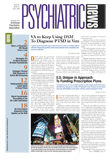Cognitive-behavioral therapy (CBT) has been found to be more effective than the drug zopiclone (Imovane) in short- and long-term management of insomnia in older adults.
On average, patients who received CBT improved their “sleep efficiency”—a ratio of total time spent asleep to actual time spent in bed, multiplied by 100—by 9 percent, compared with a decline of 1 percent in the group receiving zopiclone. These statistically and clinically significant improvements in the CBT group were maintained at six-month follow-up, according to a report in the June 28 Journal of the American Medical Association.
“Given the increasing amount of evidence of the lasting clinical effects of CBT and lack of evidence of long-term efficacy of hypnotics, clinicians should consider prescribing hypnotics only for acute insomnia,” wrote lead author Berge Svertsen, Psy.D., and colleagues.“ At present, CBT-based interventions for insomnia are not widely available in clinical practice, and future research should focus on implementing low-threshold treatment options for insomnia in primary care settings.... Future research should seek to identify which single factors in the CBT regimen produce the best results and to what extent booster sessions at one to two years after initial treatment may be necessary to maintain improvements.”
Svertsen and colleagues are with the University of Bergen in Norway.
In the study, 46 adults with an average age of 60.8 years were randomly assigned to either CBT (18), a medication regimen of 7.5 mg. zopiclone nightly (16), or placebo medication (12).
Five learning modules were included in the CBT condition: sleep-hygiene education, sleep restriction, stimulus control, cognitive therapy, and progressive relaxation technique.
In the sleep-hygiene education module, the patient learns about the impact of lifestyle habits such as exercise, diet, and alcohol use and the influence of environmental factors such as light, noise, and temperature. The sleep-restriction module involves a strict schedule of bedtimes and rising times with the aim of increasing “sleepdrive” through partial sleep deprivation.
In the stimulus-control module, the aim is to break associations between the sleep environment and wakefulness by teaching the participant not to engage in bedroom activities incompatible with sleep and to stay in the bedroom only when asleep or sleepy. The cognitive-therapy module aims to identify, challenge, and replace beliefs and fears regarding sleep or the loss of sleep with realistic expectations regarding sleep and daytime function.
Finally, the progressive relaxation technique teaches the patient to recognize and control muscular tension through the use of exercise instructions on audiotape or compact disc, and to practice the technique at home on a daily basis.
Ambulant clinical polysomnographic (PSG) data and sleep diaries were used in the assessment of four outcome measures: total wake time, total sleep time, sleep efficiency, and slow-wave sleep (time spent in sleep stages 3 and 4).
At six weeks, the total wake time for the CBT group improved significantly more than for both the placebo group and the zopiclone group; zopiclone was not significantly better than placebo. And the amount of PSG-recorded slow-wave sleep improved significantly in the CBT group compared with the placebo and zopiclone groups.
At six month follow-up, total wake time, sleep efficiency, and slow-wave sleep were all significantly better in the CBT group than in the zopiclone group. Similar to PSG, the sleep diaries showed an increase in total sleep time in the CBT group at six months compared with six-week follow-up.
“This study demonstrated superior benefits of CBT over zopiclone for treatment of chronic insomnia in older adults at six-week and six-month follow-up,” the authors wrote. “Future research should require effects in slow-wave sleep and define effects on daytime sleepiness.”
The study was funded by grants from the University of Bergen, Meltzer Fund, and Norwegian Foundation for Health and Rehabilitation.
